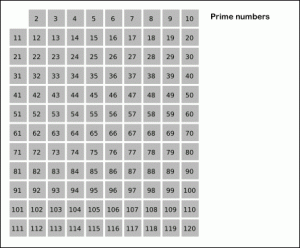
Prime numbers refer to numbers that are greater than 1 and can only be divided evenly and with itself. Â After division, the separate entities must be even and must not contain additional decimals or fractions. Â Numbers that cannot be divided evenly and are greater than 1 also are classified as composite numbers.
Knowing which numbers are prime numbers could be an easy task for people who like the subject of mathematics. Â For many of these people, solving equations and creating formulas are not complicated for them and it will only take them a short time to handle math problems. Â For other people, a simple issue of knowing if a number is prime or composite, is definitely no easy task. Â The fact that numbers are involved make people think of the problem or concern as very difficult. Â With this concern at hand, many teachers and math experts try to teach their students with different techniques in knowing about prime numbers and composite numbers. Â For those who find ease with the math subject, they can employ factorization when trying to find out if a number is indeed a prime number or not. Â Through factorization, people will be able to get the factors or divisors for a particular number. Â Prime numbers will only have two divisors including itself and so for numbers that have more divisors, they automatically become composite numbers.
For people who are not so math-savvy, they may be taught about prime numbers through the concept of separating piles or items. Â Using coins for example, students may be asked to divide the coins into two even halves. Â If there are remainder coins involved, then the division is not even and therefore the number involved is not prime. Â If the same number can be divided into 3 different groups for example, it simply means that this number is also not a prime number. Â The basic rule for prime number is that it can only be divided by itself or evenly. Â More than two divisors involved makes a number become composite instead of prime.








Leave a Reply